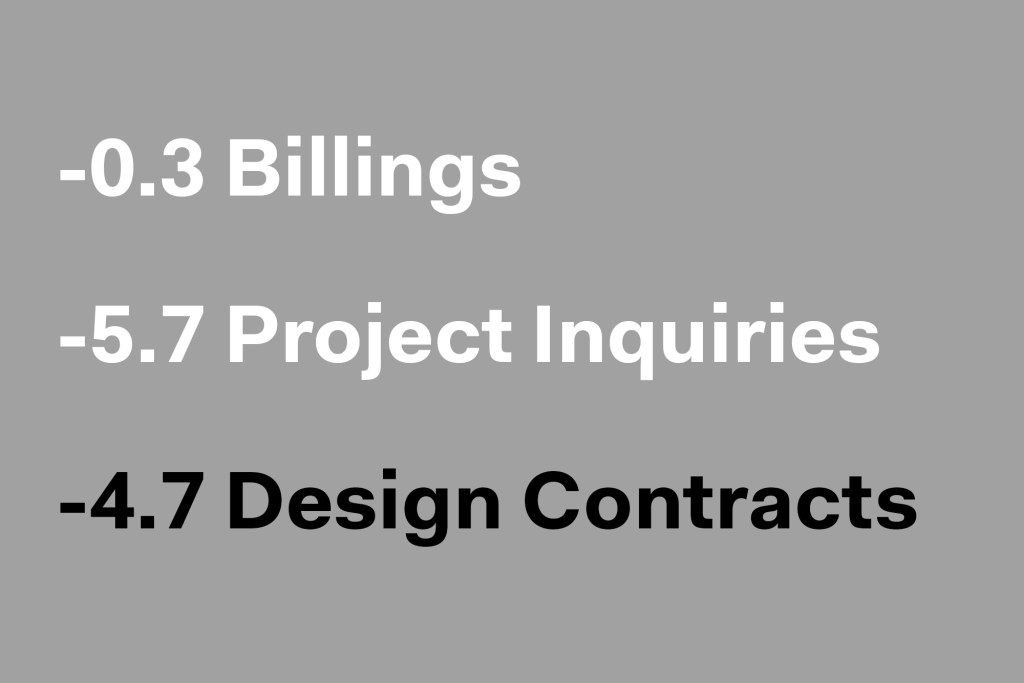AIA’s monthly Architecture Billings Index came in at 53.2, a 0.3 point decrease from May’s score of 53.5. The ABI is a leading economic indicator of construction activity in the U.S. and reflects a nine- to 12-month lead time between architecture billings and construction spending nationally, regionally, and by project type. A score above 50 represents an increase in billings from the previous month, while a score below 50 represents a contraction.
“The ABI held in growth territory as demand for nonresidential services stayed strong in June,” explains Ali Wolf, the chief economist of ARCHITECT’s parent company, Zonda. “This indicator will become increasingly important to watch over the next few months to see if the industry slows along with the national economy or bucks the trend.”
Both design contracts and new project inquiries moderated in June. New project inquiries posted a score of 58.2, falling 5.7 points from May’s score of 63.9. Design contracts came in at 52.2, decreasing 4.7 points from May’s score of 56.9 points. “Ongoing project activity at architecture firms as well as new work coming online remains strong, pushing project backlogs up to seven months on average nationally,” says AIA chief economist, Kermit Baker, Hon. AIA. “In spite of heavy workloads, employment at architecture firms has stabilized, suggesting that adding new employees is becoming even more challenging as the building construction sector continues to recover.”
The month-to-month changes in scores for regional billings—which, unlike the national score, are calculated as three-month moving averages—moderated again in June. All four regional scores lost ground, with one score falling below 50.0. Billings in the Midwest decreased 2.0 points to a score of 54.8, while billings in the West fell 1.5 points to a score of 57.8. Billings in the South fell 0.8 point to a score of 51.5, and billings in the Northeast decreased 2.7 points to a score of 48.7.
All four of June’s sector billings scores remained above 50.0 while only one score increased from its June values. The commercial/industrial sector fell 5.0 points to a score of 52.5; the institutional sector increased 1.8 points to a score of 53.5. The multifamily residential score fell 1.9 points 52.6, and the mixed practice sector decreased 3.4 points to a score of 52.8. Like the regional billings scores, sector billings scores are also calculated as three-month moving averages.



